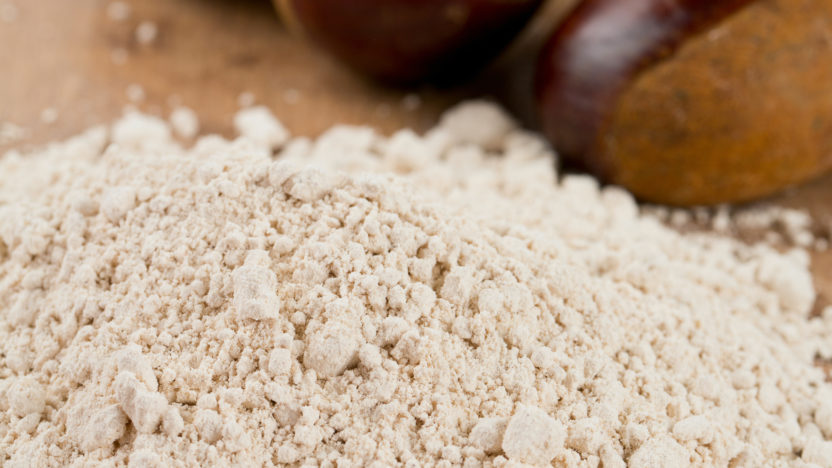 DOP
Toscana
DOP
Toscana
Lunigiana chestnut flour
The Chestnut Flour of Lunigiana is a Protected Origin Designation (DOP) on the national list approved by the Ministry of Agriculture And Forestry, whose requirements are regulated by the production discipline of the Tuscany region.
Features
The Chestnut Flour of Lunigiana is a sweet flour obtained by processing chestnuts produced by chestnuts of the species Castanea sativa (Mill.).
At the time of consumption, the Chestnut Flour of Lunigiana must have the following requirements:
– maximum humidity of 8%;
– velvety to the touch and fine to the palate. Grain less than or equal to 0.8 mm, of which at least 80% less than or equal to 0.3 mm;
– color that can vary from white to ivory;
Sweet taste on the palate. Total sugars, total not less than 20%;
– scent of chestnuts, no smell of mold and stale.
Production
Lunigiana Chestnut Flour is produced using traditional local techniques and methods.
Only chestnuts, dryers (“degrees”), and traditional mills located in the geographical area of production are used for its production.
The density of fruit plants in production cannot exceed 160 units per hectare. The maximum production yield cannot exceed 3,500 kg per hectare.
Chestnut harvesting must take place between 29 September (on the feast of St Michael) and 15 December.
Chestnuts are dried in structures locally called “grades”.
The “degrees” or dryers are masonry structures of stone, lime and sand, two floors, rectangular or square in shape, having the floor built from sandstone slabs. Between the floor and the ceiling, at a height of about 2-2.50 m, rests on the crossbars the grate (or “canniccio”), formed by chestnut wood axes, placed at a distance of 1 – 2 cm from each other.
The drying of chestnuts for the production of the Chestnut Flour of Lunigiana must be done over a low heat with the exclusive use of chestnut wood, for a minimum period of 25 days.
After the drying process, chestnuts must be cleaned from their outer skin, with traditional beater machines, and ventilated by machine or with traditional techniques and repassed by hand, to remove the unclean parts. The maximum yield of peeled dried chestnuts, compared to 1 ton of raw chestnuts can not exceed 32% in weight.
The mills intended for grinding dried chestnuts must be of the traditional stone grinding type.
The energy for the operation of the millstones can be both electric and hydraulic.
The grinding cannot be done after 30 January of the year following the harvest year.
The mill, in order to prevent a quick grinding dough the stone and the face warm, with the consequent loss to the finished product of its precious characteristic of “borotalcing” i.e. velvety to the touch and end to the palate, must not grind more than five tons of dried chestnuts per day for grinds.
The amount of dried chestnuts ground per day, the name of the supplier and the duration of the grinding time must be shown in the appropriate register drawn up by the mill.


